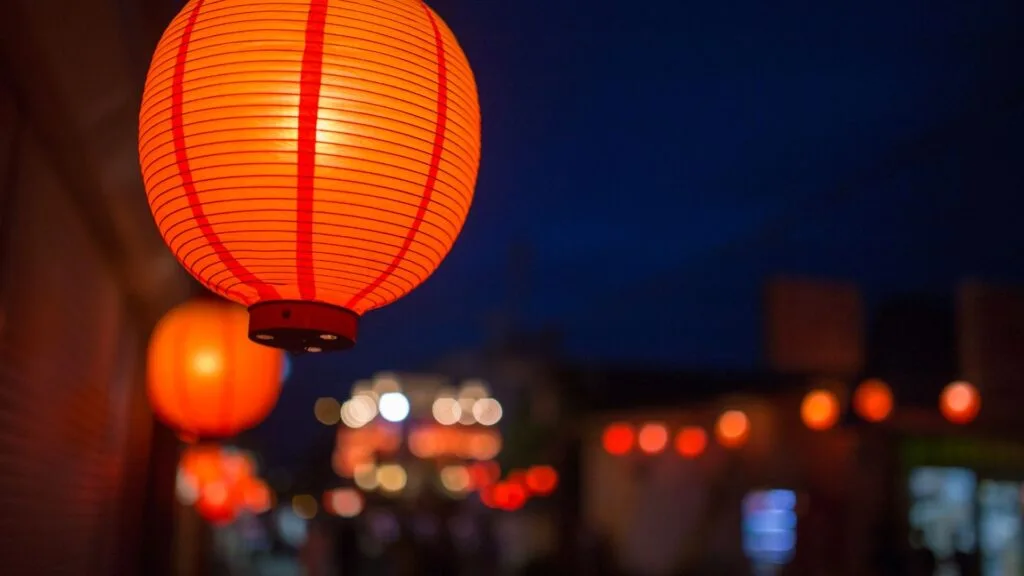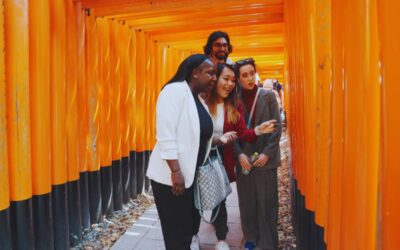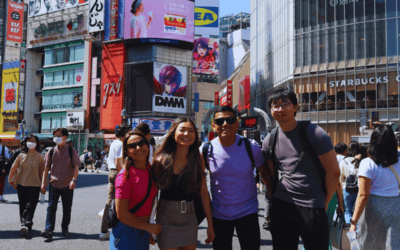If you’re in Japan during the summer, you can’t miss out on Tokyo summer festivals, known as Natsu Matsuri in Japanese. From local gems to huge tourist draws, these festivals offer something for everyone, ensuring you’ll never be bored. Each event has a rich history, with roots stretching back hundreds of years. If you’re staying put in Tokyo this summer or making it your destination of choice, we’ve rounded up the best summer festivals in the city for you to explore.
Unmissable Tokyo Summer Festivals
Shinjuku Eisa Festival

The Shinjuku Eisa Festival stands out as one of Tokyo’s most famous summer festivals, drawing in over a million visitors annually since 2002. Eisa Matsuri, a traditional Bon folk dance hailing from Okinawa, is typically performed by younger members of the community to honour their ancestors’ spirits. This vibrant event unfolds near Shinjuku Station’s East Exit. Expect more than 20 Eisa dance troupes to take to the streets outside the station, twirling through the crowds while pounding portable taiko drums.
Harajuku Omotesando Genki Matsuri Super Yosakoi
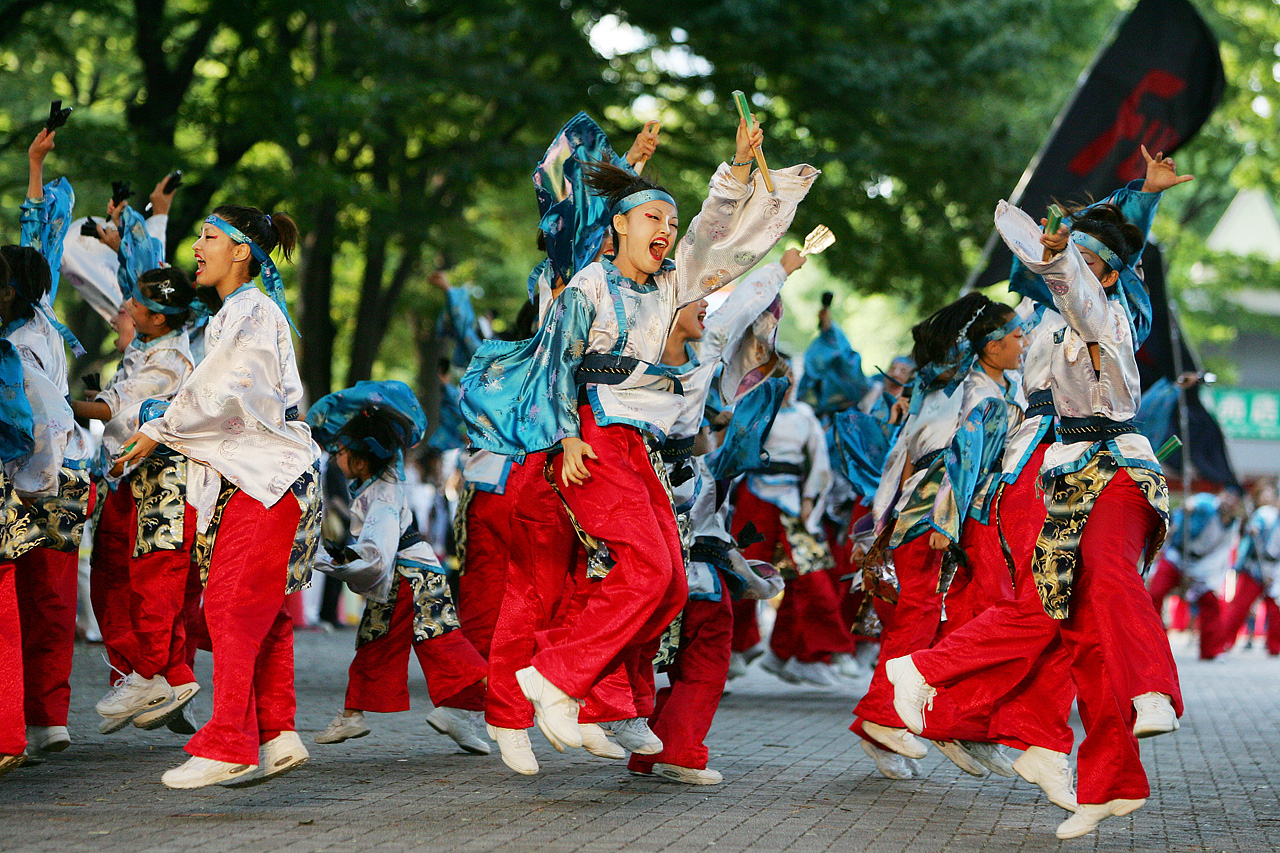
During the last weekend of August, the Harajuku Omotesando Genki Matsuri Super Yosakoi takes over the area surrounding JR Yamanote Line Harajuku Station and Tokyo Metro subway Meiji-jingu-mae Station. The focal point of this street dancing extravaganza, which kicked off in 2001, is the iconic Meiji Jingu Shrine located in front of the station. The yosakoi dance, a relatively modern form of dance originating from Kochi Prefecture in 1954, takes centre stage here.
Following the war, the Kochi Chamber of Commerce and Industry launched the Yosakoi Festival in 1954 to aid the local economy’s recovery and reconstruction efforts. Since then, approximately 220 Yosakoi-style celebrations have taken place, with this festival alone attracting around 100 yosakoi dancing teams. Prepare to witness these dynamic performances unfold in various locations across Harajuku during this vibrant addition to Tokyo summer festivals.
Hie Shrine Sanno Festival

The Sanno Matsuri, also known as the shrine’s Reitaisai or Annual Grand Festival, takes place in mid-June at Akasaka Hie Jinja. While this festival is one of Tokyo’s most renowned traditional events, it is only held in even-numbered years. During the Edo era, the mikoshi procession of this festival had the honour of entering Edo Castle (now the Imperial Palace) for the Shogun’s observation, alongside the Kanda Matsuri of Kanda Myojin. At this festival, the souls of gods housed at Hie Shrines are carried on two horen and one mikoshi, both types of portable shrines, and parade through the territory they protect. It’s a cherished part of the Tokyo summer festivals scene, rich in history and tradition.
Tomioka Hachimangu Shrine Festival
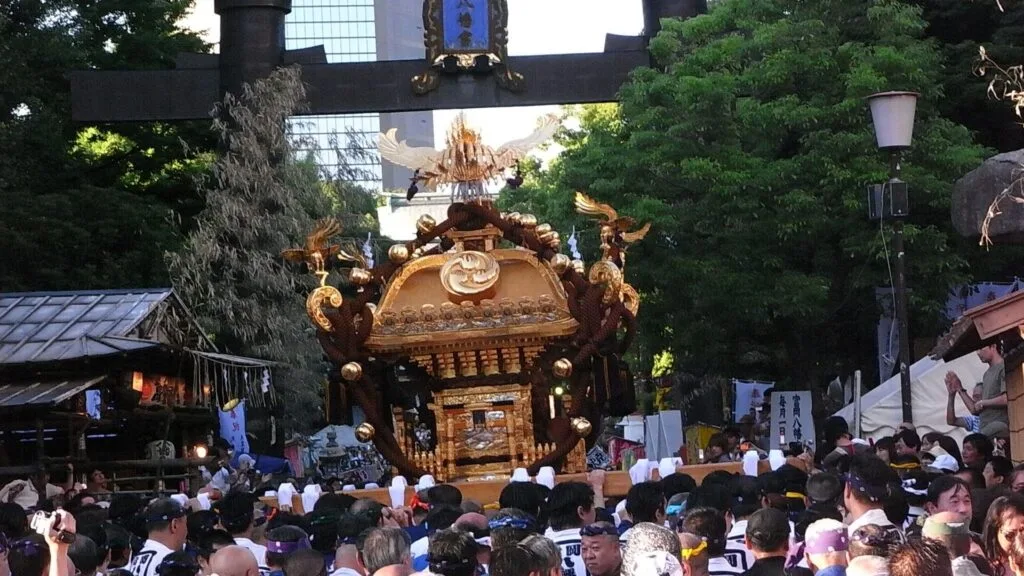
The Tomioka Hachimangu Shrine Festival is among the three great Edo festivals. Established by the Tokugawa shogunate, the Fukagawa Hachiman Festival originally commemorated the birth of Ietsuna Tokugawa, the fourth-generation successor of the Tokugawa shogun. Spectators and participants come together, spraying festival attendees with cleansing water while shouting “Washoi, Washoi.” Each year, approximately 50 teams parade through the streets, bearing massive Mikoshi, while onlookers sprinkle water to purify the shrines and cool down the carriers of the portable shrines. Even the local fire department joins in, spraying crowds with high-pressure fire hoses. It’s a lively addition to the Tokyo summer festivals calendar, blending tradition with community spirit.
Asakusa Samba Carnival

Summer in Japan bursts with vibrant festivals, and the Asakusa Samba Carnival is among Tokyo’s most spectacular! What gave rise to this now-famous Carnival was when the Mayor of Taito City extended an invitation to past winners of the Rio Carnival in Brazil, the birthplace of samba. This lively event features a colourful tournament and parade of over 5,000 samba dancers and teams from across Japan, drawing in more than 500,000 attendees annually. Approximately 3,500 samba enthusiasts from all corners of Japan join teams from Brazil’s carnival heartland, creating an electrifying atmosphere. It’s a must-see on the Tokyo summer festivals circuit, promising music, dance, and endless energy.
Asagaya Tanabata Festival
One of Suginami’s key summer events is the Asagaya Tanabata Matsuri, or “Star Festival,” held since 1954 on the Pearl Centre Shopping Street near Asagaya station around early August. The almost kilometre-long covered arcade shopping street comes alive with imaginative hanging decorations, mainly crafted from papier-mâché. Animated figures are a hit, with many capturing them in photographs to cherish, especially as each year brings new decorations! The streets are bustling with food and drink vendors during the festivities, offering a chance to shop and partake in traditional Japanese festival activities like goldfish scooping. The Asagaya Tanabata Festival usually runs for five or six days over the first weekend of August, adding to the vibrant tapestry of Tokyo summer festivals.
Ueno Summer Festival
Spanning nearly a month, the Ueno Summer Festival mainly centres around the Shinobazuno-ike Pond. Alongside the daily antique market, various activities such as ice sculpting and Toro Nagashi are scheduled. The highlight, the “Summer Festival Parade,” on July 20, is an exhilarating spectacle with parades held in three locations: Ueno Station, Ueno Aquatic Musical Hall, and Ueno Central Street.
Azabu Juban Festival

The Azabu-Juban Noryo Matsuri, meaning ‘cool of the evening,’ has been a Tokyo favourite for over 50 years. It offers two days of dance, performances, live music, and international cuisine, alongside snack and craft stalls by local and visiting vendors from across Japan. The festival in Azabu-Juban is a gastronomic delight, with food stalls offering local dishes from Hokkaido to Kyushu, alongside traditional matsuri fare.
Iriya Asagao Festival
Running from July 6th to 8th, the Iriya Morning-Glory Event coincides with the Tanabata festival. Flower sellers line Kototoi Street surrounding Iriya Kishimojin (Shingen-ji Temple) with stalls selling morning-glory blooms. The event, dating back to the Meiji period, attracts around 400,000 visitors to peruse the flower booths and festival stalls.
Asakusa Hozuki-Ichi Festival

Sensoji Temple, Tokyo’s oldest temple dating back to 628, remains a beloved spot for locals and tourists alike. A prayer offered on July 10 is believed to bring 46,000 days’ worth of blessings, making it a significant day. During this time, over 100 stalls selling hozuki (Japanese lantern plants) line the temple grounds. Visitors can enjoy the soothing sounds of wind chimes, the vibrant hues of flowers, and the sight of many in bright yukata, offering a joyful glimpse into life in Tokyo’s historic heart.
Diving Into Tokyo’s Vibrant Summer Festival Scene
We hope we’ve inspired you to explore the Tokyo summer festivals listed above. These captivating summer events offer great opportunities to immerse yourself in Japanese traditions and culture. Always remember to respect Japanese etiquette and mannerisms while visiting. Don’t hesitate to return for multiple visits to experience different facets of Japanese traditions and fully indulge in this wonderful culture.

